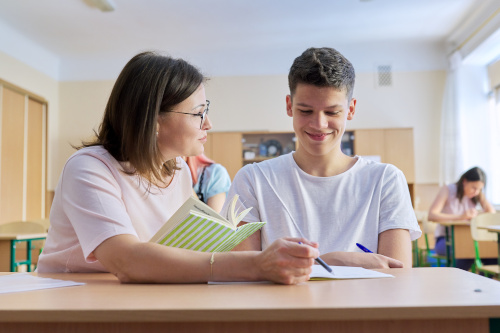When I ask educators if they have heard of the term “growth mindset,” many will raise their hands or nod they have. However, when I ask educators to define what it means to have a growth mindset, I often get blank stares or they struggle with putting it into words.
This is one of the issues educators might be struggling with – well-researched concepts like growth mindset sound familiar, but there is little guidance on putting these concepts into practice.
If we are to truly close educational gaps, educators must believe in and must be empowered to make a difference and put a plan in place to support student success.
Focus on Collective Teacher Efficacy
Professor John Hattie defines “collective teacher efficacy” as “the collective self-perception that teachers in a given school make an educational difference to their students over and above the educational impact of their homes and communities.”
In this video, Hattie discusses collective teacher efficacy in greater depth. He shares how educators need to start taking credit for the learning happening in their classrooms by believing they are the ones causing that learning. This is an important first step.
Understanding learning does not just happen by chance is foundational for success. Educators who believe in student growth and achievement are the reason students grow. This is because these educators know how to plan for success and, in turn, set up the right environments to foster learning.
Understand Learning Beliefs
To develop collective teacher efficacy, it’s important for educators to take time to dig into their own learning beliefs by answering questions such as:
- What are your beliefs about learning?
- What are the steps you take to learn something new?
- How do you learn best?
For maximum impact, educators can do this activity in PLCs. Administrators or coaches can pose the questions and have everyone do a five-minute quick write to collect their thoughts. Then these thoughts can be shared – and discussed – with the group. Educators can even create posters with these learning beliefs that can be hung in the teacher lounge or classrooms. This can also be done online using Padlet, for example.
Once educators understand their own learning beliefs, it’s important to understand what it means to have high expectations for all students. The best way is to do this is by asking additional questions such as:
- What are your non-negotiables for classrooms?
- What does an inclusive and productive learning community look and feel like at your school for all students? Teachers?
- What are your expectations for your educators and students when it comes to data-driven instruction?
For higher impact, educators can repeat the same discussion and collaboration activities completed for the collective teacher efficacy questions with these questions about learning beliefs. Taking this extra time to clarify expectations and learning beliefs sets the foundation for proactive planning for student success.
Develop a Plan for Success
Next, it is important to set aside TIME to plan. In planning, it’s essential for educators to devise instructional strategies for whole group, small group, and independent instruction for all students, keeping grade-level standards and outcomes in mind. There are online resources available, such as this step-by-step guide, to help with this planning.
During the planning phase, educators should consider focusing on building can-do cultures, providing scaffold and support for grade-level success, promoting student self-efficacy, involving families, and thinking differently about structures and schedules. Collectively, these different areas will help accelerate student learning for grade-level success and ensure equitable outcomes and growth for all students.
When thinking about closing gaps and planning for success for all students, educators need time, resources, and support to plan. Equally important, they need to understand their key role in student success – they are, after all, the ones driving student learning and achievement!
Related:
Are you tackling the durable skills challenge?
5 skills for future success–and how to help students develop them
- 4 ways to encourage play in education - April 25, 2024
- It’s time to pay student teachers - April 25, 2024
- The evolving requirements of a K-12 school network - April 24, 2024

